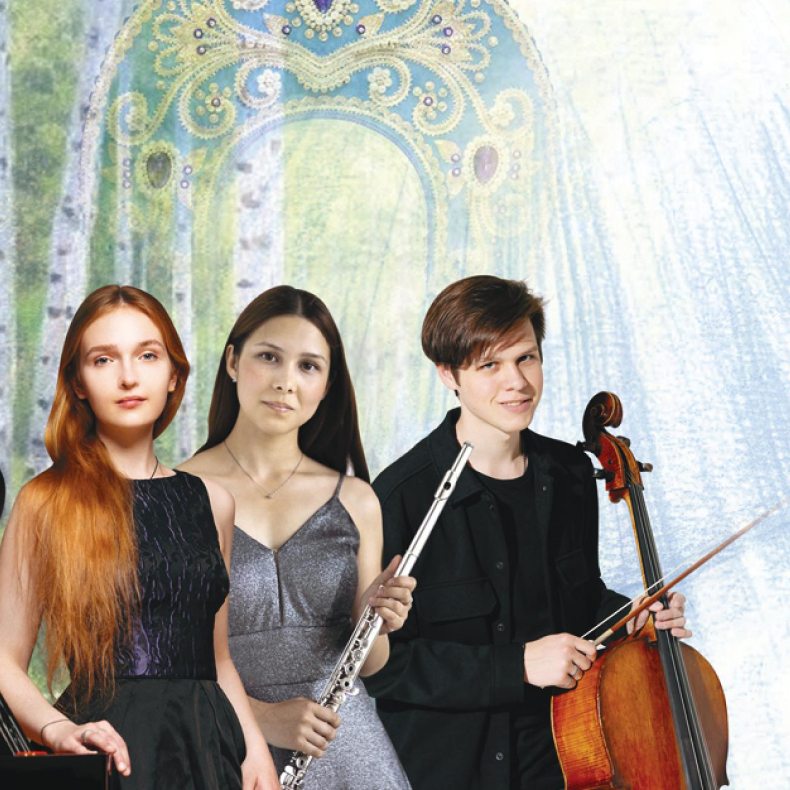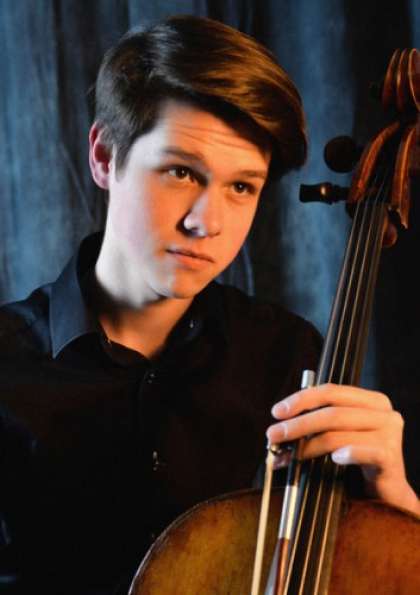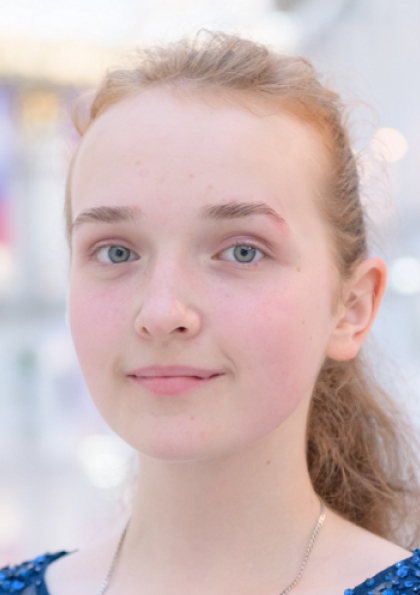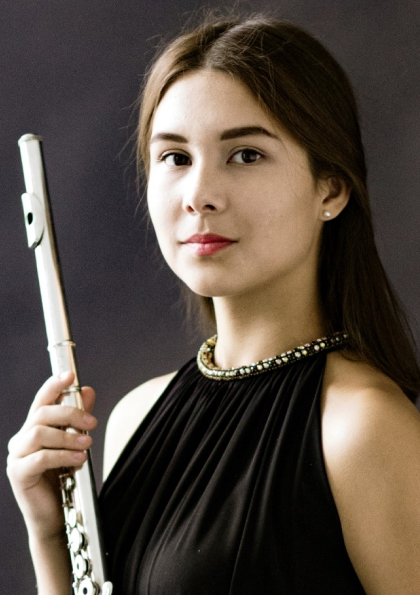Soloists from the Saint Petersburg Music House in Brussels
“Embassy of Musical Mastery” for Russia Day
On June 13, the Russian House in Brussels and the Saint Petersburg Music House, led by Professor Sergei Roldugin, People’s Artist of Russia, is pleased to invite you to the concerts of the “Embassy of Musical Mastery” project. These performances will feature talented young soloists who are laureates of international competitions:
PROGRAM:
Chapter I.
Tchaikovsky (1840-1893). Pezzo Capriccioso for cello and piano op.6
Performed by – international laureate Grigory Filipchenko (cello)
Piano part – international laureate Anastasiia Kliuchereva
Rachmaninov (1873-1943) – Yu. Dolzhikov (1932-2005).
“Vocalise” (arranged for flute and piano) op.34 №14
Performed by – international laureate Azaliya Nogmanova (flute)
Piano part – international laureate Anastasiia Kliuchereva
Davydov (1838-1889). “At the Fountain” from the cycle Four Pieces for Cello and Piano op.20 №2
Performed by – international laureate Grigory Filipchenko (cello)
Piano part – international laureate Anastasiia Kliuchereva
Alyabyev (1787-1851). – A. Yashiro (1929-1976). “The Nightingale” romance (arranged for flute and piano)
Performed by – international laureate Azaliya Nogmanova (flute)
Piano part – international laureate Anastasiia Kliuchereva
Rachmaninov (1873-1943). Sonata for cello and piano in G minor op.19
III. Andante – IV.Allegro mosso
Performed by – international laureate Grigory Filipchenko (cello)
Piano part – international laureate Anastasiia Kliuchereva
Chapter II.
Tchaikovsky (1840-1893). Theme and Variations in F major oр.19 №6
Tchaikovsky (1840-1893) – M. Pletnev (b.1957). Concert suite from the ballet The Nutcracker
1. March – 2. Dance of the Sugar Plum Fairy – 3. Tarantella – 4. Intermezzo –
Trepak – 6. Chinese Dance – 7. Andante maestoso (Pas de Deux)
Balakirev (1837-1910). An Oriental fantasy “Islamey” for piano ор.18
Performed by – international laureate Anastasiia Kliuchereva (piano)
Artistic director of the Saint Petersburg Music House –
Professor Sergei Roldugin, People’s Artist of Russia.
Pyotr Ilyich Tchaikovsky’s relatively small body of work for the cello includes a number of artistically significant pieces, among which is the short concert piece “Pezzo Capriccioso” (with “pezzo” meaning “piece” in Italian), composed in 1887. The composer dedicated it to his student and friend, the cellist A.A. Brandukov, who was its first performer. The piece is one of Tchaikovsky’s most luminous works, revealing delicate lyricism and deep human emotions.
Sergei Rachmaninoff’s “Vocalise” — a piece for voice without words — was composed in 1912 as the final piece in his 14-song vocal opus 34. The composer dedicated it to the famous singer A.V. Nezhdanova. The infinite, indescribably beautiful melodic theme, devoid of words, was able to convey the nuances of tender, expressive lyrical expression purely through its sound. The piece exists in numerous arrangements, each bringing out additional nuances and increasingly revealing its profound lyrical subtext.
The distinguished cellist Karl Yulievich Davydov is considered one of the founders of the Russian school of virtuosos. He distinguished himself as a brilliant soloist and ensemble player, an outstanding teacher, and a composer, leaving behind bright, professionally mature works for the cello. K.Y. Davydov’s importance in the national tradition is hard to overestimate, as his artistry largely shaped the nature of modern cello mastery. The piece “At the Fountain” is part of the programmatic cycle “Four Pieces for Cello and Piano,” op. 20, completed by K.Y. Davydov in the late 1860s (the other pieces in the cycle are “Sunday Morning,” “By the Cradle,” “Evening Twilight”). “At the Fountain” is a musical-pictorial sketch, depicting the beloved imagery of “water play” cherished by many composers (e.g., M. Ravel’s “Jeux d’eau”; A.K. Vlasov’s romance “To the Fountain of the Bakhchisaray Palace,” and others).
Russian folk motifs will be heard in the Variations by the renowned Russian flutist Nikolai Platonov, composed on the theme “Red Sarafan.”
The romance “The Nightingale” by A.A. Alyabyev, set to the verses of the Russian poet A.A. Delvig, was written by the composer in 1825-1826. It became so popular in the history of Russian art that many perceived it as a folk song. Structured as a woman’s monologue—an address to a singing bird—the romance contained the potential for endless renewal through improvisations imitating the nightingale’s trills and creating a unique dialogue between the person and the bird. This feature led to numerous arrangements of “The Nightingale” for different ensembles. Its delicate, expressive melody and simple instrumental accompaniment provided musicians the opportunity to infuse the new creation with a special color. The theme of the romance served as the basis for arrangements by not only Russian but also European composers, including F. Liszt, W. Jordan, and H. Vieuxtemps. The concert program includes an arrangement of “The Nightingale” for flute and piano by the famous Japanese composer Akio Yashiro.
Sergei Vasilyevich Rachmaninoff, an outstanding Russian composer, pianist, and conductor, remains one of the most significant figures in world art, having created brilliant works in various genres and opened “new paths” in music. He completed his Sonata for Cello and Piano in G minor in 1901, almost simultaneously with the famous Piano Concerto No. 2, with which it shares many similarities. The Sonata was virtually the first Russian composition in this genre, marking the beginning of its subsequent development. The Sonata is stylistically characteristic of the young Rachmaninoff, featuring vivid romantic feelings, an agitated tone of expression, lyrical melodicism, active rhythmic movement, and a compelling dialogue between the two instruments. All these elements distinguish the work and make it interesting for both listeners and performers. In the Sonata’s four-part cycle, the third, relatively small part (Andante), is among the most expressive lyrical pieces, richly represented in Rachmaninoff’s legacy. A simple song theme, continuously developing and revealing new expressive intonational twists, transitioning from one instrument to another, creates a sense of a unique musical space. The finale (Allegro mosso), continuing the idea of “festive” jubilant conclusions characteristic of Russian instrumental cycles, synthesizes the moods of the preceding parts in its virtuosic sound. The composer dedicated the Sonata to the cellist A.A. Brandukov (1858–1930), an outstanding virtuoso closely associated with Rachmaninoff since his early compositional steps. It is no coincidence that Brandukov participated in the first solo concert of the 19-year-old Rachmaninoff in 1892.
In 1873, Pyotr Ilyich Tchaikovsky composed “Six Pieces” for piano, Opus 19. The cycle, which includes bright and expressive pieces, concludes with “Theme and Variations.” A simple, unpretentious melody of a gentle, song-like character is presented here in 12 contrasting variations, each gaining numerous nuances: it alternates as a lyrical statement, a virtuosic toccata, a brilliant allegro, and more. Tchaikovsky accompanied some of the variations with specific notes: “In the style of a mazurka” (Variation 9), “In the style of Schumann” (Variation 11), thus creating additional musical allusions. The cycle ends with a bravura coda, affirming the transformed character of the main theme.
Tchaikovsky’s ballet “The Nutcracker,” first staged in 1892 at the Mariinsky Theatre, remains one of the most dazzling works of world musical culture. The fairy tale by E.T.A. Hoffmann, brought to the stage, became a symbol of the victory of good and love in the age-old struggle against evil, and the magical music of the Russian composer doomed it to immortality. Shortly before the premiere of the ballet, Tchaikovsky created the Concert Suite “The Nutcracker” (known as Opus 71-a), intended for performance in symphonic concerts. Mikhail Pletnev created a virtuosic Concert Suite for piano, including several numbers from the ballet: 1. March. 2. Dance of the Sugar Plum Fairy. 3. Tarantella. 4. Intermezzo. 5. Trepak. 6. Chinese Dance. 7. Andante maestoso (Pas de Deux).
Mily Alexeyevich Balakirev was a prominent Russian composer, pianist, and musical public figure, and the leader of “The Mighty Handful.” He considered one of the leading directions in the development of national culture to be the use of folklore as the basis for creating artistic images and as a source of themes and plots for musical works. Many of his compositions are based on Russian folk song motifs, such as the Overture on Three Russian Themes, the musical painting “1000 Years” (“Rus”), “Thirty Russian Folk Songs for Piano Four Hands,” and others. At the same time, M.A. Balakirev actively incorporated the folklore of other nations into his works – Czech (Overture on Three Czech Themes / “In Bohemia”), Spanish (“Fandango-Etude” / “Spanish Serenade”), and others. However, like all members of the association, he paid special attention to Eastern motifs, embodying them in the symphonic poem “Tamara,” romances, and the Oriental fantasy “Islamey” for piano (1869). M.A. Balakirev visited the Caucasus three times, where he recorded numerous folklore samples. One of these became particularly close to the composer – a Kabardian dance melody that served as the main theme in “Islamey.” This was contrasted with a lyrical Crimean Tatar song: a melodious, languid theme vividly conveying the images of Eastern lyricism. The piano writing in “Islamey” is largely influenced by the style of F. Liszt – richly virtuosic, technically complex, and texturally diverse. The two themes in “Islamey” develop throughout the fantasy, with the main theme (the Kabardian dance) predominating, and in the recapitulation, it is played, as indicated by the composer, in the character of a trepak. The composer dedicated his work to the famous pianist N.G. Rubinstein, whose performance style he had in mind when creating the piece.
Professor at the St. Petersburg Conservatory, Zivar Guseynova






